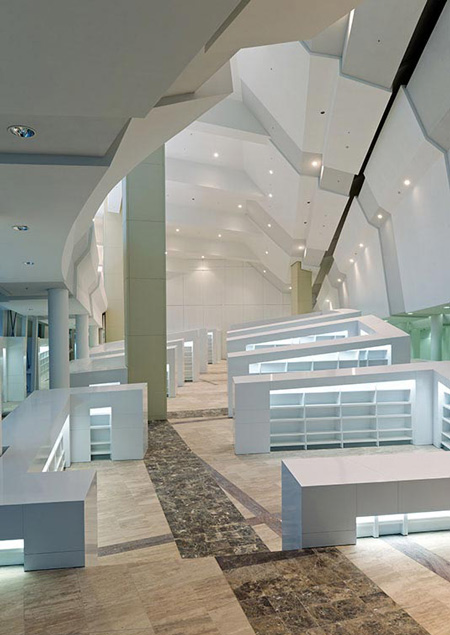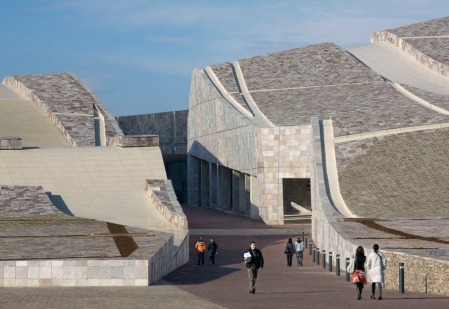City of Culture of Galicia, Spain : Peter Eisenman
We went on an office trip to Berlin at the end of last year and I was talking recently to one of my work colleagues Ian, about the Memorial to the Murdered Jews of Europe by the American architect Peter Eisenman. I said I hadn’t read much about Eisenman’s work over the last few year’s and wondered how these big name architects survived on small projects…
Ian looked at me a bit funny, said what? and told me to look into Galicia’s City of Culture, a development on a scale so massive, that it could quite possibly be one of the largest building projects in Europe, that no one’s ever heard of… Which I suspect is something of an ongoing disappointment to the Citizens of Santiago de Compostella as they’ve had to watch as an unbelievably large number of Euros has been spent/ wasted trying to get it finished…

The complex is effectively a brand new city carved out of the top of a mountain in Southern Spain. Covering a total area of nearly 175 hectares, the project was to be a new home for a series of distinct cultural functions including a museum, a library, an archive facility, an arts center and a performing arts center.
The result of a 1999 competition, Eisenman’s winning idea was that the complex would appear as if it had always been there, buried below the surface, which though some unavoidable tectonic process, had erupted and heaved itself up from out of the ground.
Formally the layout was generated by overlaying part of the medieval street pattern of Santiago on to the top of the hill, which with the addition of some de rigueur Eisenman grid and fragmentation devices, helped to create an interesting, if somewhat rather spurious design concept.
The fiendishly complex nature of the proposals and the architects infamous penchant for minutely detailing every junction, resulted in a massive overspend, which with a final total cost in the region of €400m was more than 4 times the original budget.
Couple this with what now appears to be insanely over optimistic attendance figures (visitors to the beautiful UNESCO listed World Heritage site of Santiago, just do NOT seem to want to leave the Old Town) and what’s left is an empty folly to the vanity of its main protagonist, the premier at the time Manuel Fragan. A hubristic white elephant, or as The Guardian put it in a review when it first opened in 2011 “an anachronism at a time of austerity“.
So it came as no surprise to anyone when in 2013, after more than 10 years of building, and with Spain’s economic engine on the verge of collapse, that the project was permanently halted, leaving two of the six buildings unbuilt, and the future of the completed four, hanging precariously in the balance…. A perfect example of the wrong project in the wrong place at the wrong time..
I usually like to finish with an opinion, but for this post, I think I’m going to let these images speak for themselves… The scope and ideas behind this project are undoubtedly interesting, the materials are wonderful and the spaces created dynamic and exciting. But at the same time the scale over which all these aspects are being spread really should have set alarm bells ringing.
Yes as architects we need to push the envelope, offer clients more than they knew or thought they wanted, but we do ourselves no favors as a profession when things get as out of hand as they seem to have done here… When you read that almost every slab of the stone cladding and paving is unique in size and shape and had to be computer cut to ensure that it went into the one place on the whole project it could, you really do have to question whether the clients best interests where ever really taken seriously…









